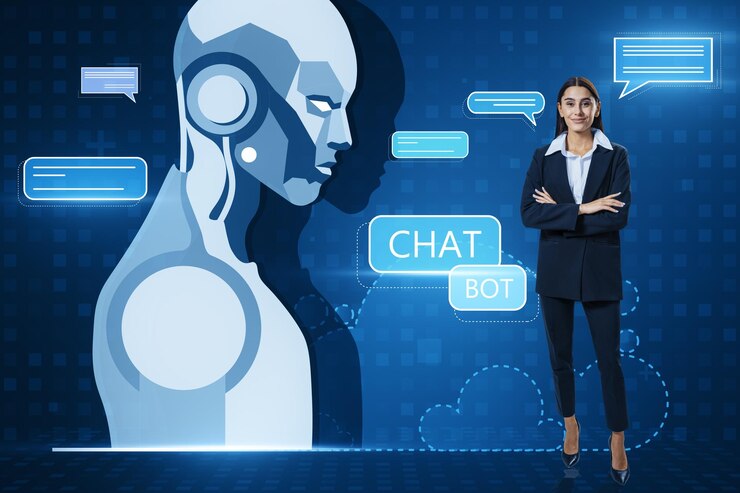Creating a chatbot powered by Deep Natural Language Processing (NLP) is an exciting endeavor that combines machine learning, artificial intelligence, and linguistics to enable effective human-computer communication. Here’s a step-by-step guide on how to build a chatbot with deep NLP that can understand and respond to users in a natural, intuitive way.
1. Define the Purpose and Scope
Before diving into technical development, clearly define your chatbot’s purpose. Is it meant for customer support, e-commerce assistance, personal finance, or entertainment? Knowing the scope of the chatbot helps in determining its language requirements, complexity, and the NLP models that will best serve your needs.
2. Select a Suitable NLP Model
There are multiple pre-trained NLP models available, each with unique capabilities:
- BERT (Bidirectional Encoder Representations from Transformers): Known for understanding context in a text and handling complex queries, making it great for question-answering systems.
- GPT-3 (Generative Pre-trained Transformer 3): Effective for generating human-like responses in open-domain conversations.
- Dialogflow or Rasa: Provides a robust platform to build chatbots with NLP capabilities, allowing for easier integration with pre-trained models.
3. Preprocess Text Data
Quality data preprocessing is crucial. NLP models work better with clean, tokenized data. Key steps in text preprocessing include:
- Text Normalization: Removing punctuation, converting text to lowercase, etc.
- Tokenization: Breaking down sentences into words or subwords for easier processing.
- Stop Words Removal: Eliminating irrelevant words like “the,” “is,” and “and.”
- Lemmatization/Stemming: Reducing words to their root forms (e.g., “running” to “run”) to understand semantic meaning better.
4. Train the NLP Model
After preprocessing, train your selected model on the dataset. If you have a small dataset or require domain-specific responses, consider fine-tuning a pre-trained NLP model like GPT or BERT. You can use platforms like TensorFlow, PyTorch, or Hugging Face’s Transformers library to streamline the training process.
- Supervised Learning: Collect question-answer pairs relevant to your chatbot’s domain and fine-tune the model.
- Transfer Learning: Fine-tune pre-trained models like GPT-3 on your domain-specific data, reducing training time and resource requirements.
5. Build the Conversation Flow and Response Generation
A chatbot should feel intuitive and responsive. Here are methods to design effective conversation flows:
- Intent Recognition: Use NLP to identify user intent, ensuring the chatbot understands and categorizes the user’s purpose.
- Entity Extraction: Extract relevant details (e.g., names, dates) from queries to provide more specific responses.
- Response Generation: Use a mix of rule-based replies and generative models for natural responses. In more advanced cases, hybrid models with rule-based fallback may work best.
6. Implement Dialogue Management
Dialogue management allows the chatbot to maintain context over multiple exchanges. This involves:
- Context Tracking: Remembering the user’s intent throughout the session.
- Slot-Filling: Collecting necessary information to complete a query over multiple exchanges.
- Conditional Responses: Adjust responses based on previous interactions, making the chatbot feel more personalized and responsive.
7. Evaluate and Test the Chatbot
Rigorous testing is essential for an effective chatbot. Key evaluation metrics include:
- Accuracy of Intent Recognition: Ensure the model accurately identifies user intent.
- Response Relevance: Test responses for logical consistency and relevance.
- User Satisfaction: Conduct user surveys or analyze conversation logs for feedback.
You can use frameworks like Turing Tests or BLEU scores to assess the chatbot’s ability to emulate human responses.
8. Deploy and Monitor Performance
Once testing is complete, deploy the chatbot on your desired platform, whether a website, mobile app, or messaging service like WhatsApp or Facebook Messenger. Post-deployment, monitor the chatbot’s performance using analytics to improve and update responses as needed. Set up regular feedback loops to refine NLP models and incorporate user feedback.
Conclusion
Building a chatbot with deep NLP requires selecting the right models, performing training, and fine-tuning to enable natural, engaging conversations. By leveraging advanced NLP techniques, you can develop a chatbot that not only understands complex language but also interacts responsively with users, improving customer satisfaction and streamlining support processes. Continuous refinement is key to creating a solution that adapts to user needs and consistently provides relevant responses. For businesses aiming for maximum efficiency, partnering with AI Chatbot Development Services can accelerate this process, ensuring that the chatbot solution is optimized and tailored to meet industry standards. Expert developers can enhance functionality, integrate seamless workflows, and maintain the chatbot’s performance, enabling companies to stay competitive with a robust and responsive chatbot. By combining in-house insights with professional AI expertise, your chatbot can be an invaluable asset to meet business objectives and engage users effectively.



